Consider about VMware Server 2.0 RC1
David Davis
Network Administration - VMware Server is a virtualization software that runs on Windows or Linux operating systems and is a server virtualization platform. Recently, VMware ESXi Server is claimed to be offered completely free. If you are looking for a powerful and free virtualization platform for SMB (from VMware), you can choose between VMware Server and VMware ESXi. With the new release of VMware Server 2.0 and a number of features are provided. In this article, we will find out what VMware Server provides and compare it with ESXi.
What is VMware Server?
VMware Server is a free server virtualization product running inside Windows or Linux operating systems. The main competitor of VMware Server is Microsoft Virtual Server. However, with VMware ESXi Server currently available for free, customers will have a choice between server virtualization products (we will discuss the comparison between VMware Server & ESXi in the section below. ).
With VMware Server, you can run multiple guest operating systems inside your host operating system. There are many combinations in this way of working. For example, you can run Linux inside Windows Server or Windows Vista inside Linux.
Let's examine the latest version of VMware Server .
New points in VMware Server 2.0 RC1
VMware Server 2.0 RC1 has just been released recently and there are many new features we can consider here:
- Advanced access management interface for VMware Infrastructure (VI)
VMware has replaced the version 1.x 'VMware Console' with a new web interface. However, compared to the old interface, it has advantages and disadvantages according to the individual who wrote this article. This is completely normal, since a new version always contains its advantages and disadvantages. The old application console is easy to use and it is also quite consistent. While the new interface may have some problems with web browsing, DNS lookup, some Java issues or some usage (where you can click). Each application that often uses the web interface will have advantages, but there are also some disadvantages. Let's take a look at this new web interface.
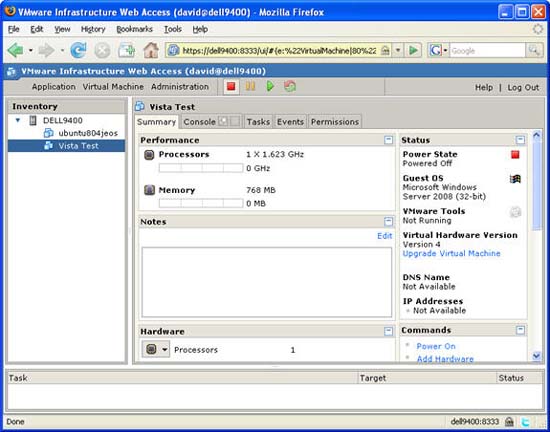
Figure 1: The new Web Access administration interface of the VMware Infrastructure
- Independent virtual machine interface
This is one of the best features. Instead of having to open the virtual machine interface in the web browser (inside the VI Web Access interface), you have a desktop icon for each of your virtual clients. It can also be used to manage virtual machines on other VMware Servers throughout the network. When launching this interface, you will have control over the client's virtual devices. This is what to launch:
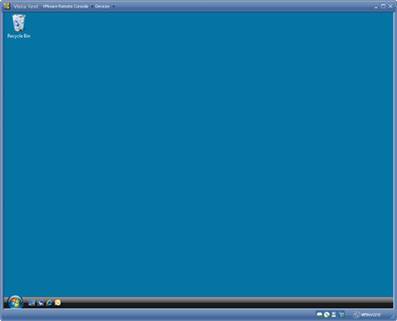
Figure 2: New independent interface
-
Support for USB 2.0 devices
- Client devices remotely
Not only can you connect to virtual ISO files and physical devices from VMware Server, you can also connect to virtual and physical CD devices located on virtual systems, manage remote VM clients. Thus, using the VMware client, you can connect to the internal CD drive with any server you will manage.
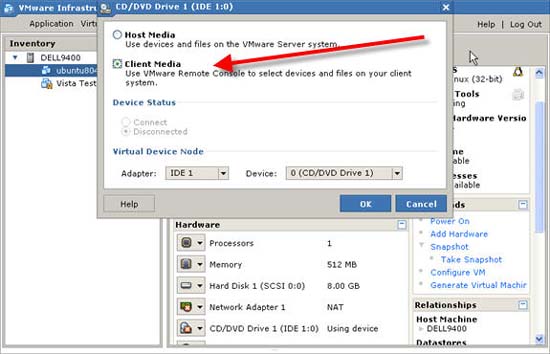
Figure 3: Ability to access host and guest CD devices
-
Ability to add SCSI disks to the running system without turning off the guest VM.
- Support Volume Shadow Copy Service (VSS) service
Previously, if you took a VM snapshot, then the data from an open application might be invalid. Now, however, with volume shadow copy service (VSS) support, VMware will communicate with the guest Windows operating system and retrieve VSS snapshots of the virtual drive, inside the client, to ensure that all The data is intact when a snapshot is restored.
- Virtual machine communication interface (VMCI)
The new interface will speed up virtual machine communication to host and VM to VM.
-
Automatically start VM
-
Support Firefox 3 browser
- Associated with Virtual Appliance Marketplace
With this link, you can quickly and easily download virtual features from the Internet and import them into VMware Server. In fact, this link will take you to VMware Server in the download feature section.
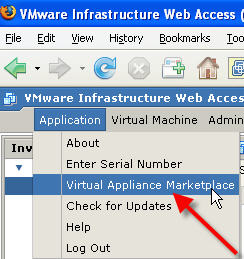
Figure 4: Virtual appliance marketplace engagement
-
Support 64 bit guest operating system
- Increase scalability
Support up to 8GB of RAM (starting from 3.6 GB in Server 1.0) on each virtual machine, 10 virtual network interface cards and up to 2 virtual SMP processors on each machine.
VMware Server 2.0 interface
The new administration interface for VMware Server 2.0 is a bit different from version 1.0:
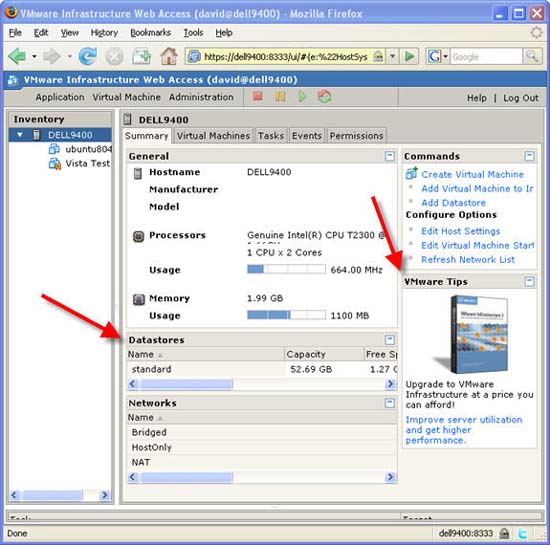
Figure 5: Inventory screen in the new VMware Server 2.0 RC1 management interface
In Figure 5 above, you can see the new admin interface. We have pointed out some remarkable areas that exist here. The first arrow points to the Datastores section. VMware Server 2.0 uses datastores as a common repository for virtual machines and images. The next arrow points to VMware Tips section. This zone is designed to give you some tips of the VMwware Infrastructure Suite.

Figure 6: Guest configuration of virtual machines
In Figure 6 above, you can see the configuration screen and virtual client state. If you click on a virtual client, you will be able to configure its features, see the resource usage section, view the status screen in a brief form, and issue commands to that server.
Is VMware Server ready?
VMware Server 2.0 offers some great features but is it ready to be used in production environments? There is a centralized management application for many VMware Server systems called VMware Virtual Center for VMware Server. Previously you had to buy support for VMware Server, but now VMware ESXi Server is completely free, so you have a lot of choices. We will find out what's new in VMware Server 2.0, then move on to compare it with VMware ESXi Server.
Comparison between VMware Server 2.0 RC1 and VMware ESXi Server
You should pay attention to the differences between VMware Server and VMware ESXi Server. Now you can choose for free but there are also other products. Let's list the pros in each product:
VMware Server 2.0
-
Run on Windows or Linux operating systems. That means you can use existing applications and run VMware Server along with what you're doing.
-
While still giving good performance, VMware Server's performance is not as strong as ESXi because the Server runs inside your operating system.
-
Can run any hardware that is supported by your Windows or Linux operating system.
- Ideal for virtual desktop and server virtualization for SMB. Ideal for those who do not want to experience problems when using a completely new operating system for virtualization.
VMware ESXi Server
-
Running on new server hardware. That means you need to delete all applications and data on your computer and install ESXi.
-
Better performance because it runs directly on hardware
-
May only run on certain hardware
- Ideal for virtualization in medium and large sized businesses.
Conclude
In this article, you have been introduced to the new VMware Server 2.0 RC1 virtualization platform. We introduced many valuable features of VMware Server 2.0 and new management applications and finally the difference between VMware Server and ESXi Server. Indeed, VMware Server 2.0 is a significant upgrade over previous versions, a great SMB Server virtualization solution or desktop. You can download VMware Server 2.0 RC1 for free from here.
You should read it
- How to access VMware ESXi hidden interface
- How to set up a virtual server
- What is the future of server virtualization?
- 4 free virtualization software solutions on Windows
- 5 ways to administer VMware ESX Server
- VMware Workstation Pro - Download VMware Workstation Pro here
- What is virtualization? Why should you use this technology?
- Set up virtualization server
May be interested
- Install guest operating system VMware ESX Server
 this article will provide step-by-step instructions on how to install vmware esx server guest / virtual machine operating system.
this article will provide step-by-step instructions on how to install vmware esx server guest / virtual machine operating system. - Instructions for fixing errors do not install VMware Tools
 you have successfully installed the virtual machine, but you cannot perform the drag and drop operation between the real machine and the virtual machine as before, you cannot fullscreen the virtual machine ... why? it's really simple, the reason is that vmware workstation uses the file system autoinst.flp (located in the virtual machine installation directory) to create the floppy drive ...
you have successfully installed the virtual machine, but you cannot perform the drag and drop operation between the real machine and the virtual machine as before, you cannot fullscreen the virtual machine ... why? it's really simple, the reason is that vmware workstation uses the file system autoinst.flp (located in the virtual machine installation directory) to create the floppy drive ... - How to access VMware ESXi hidden interface
 in this tutorial we will introduce you to the vmware esxi server hidden interface, besides how to troubleshoot and configure commands accessed from this interface.
in this tutorial we will introduce you to the vmware esxi server hidden interface, besides how to troubleshoot and configure commands accessed from this interface. - How to Increase Disk Space in VMware
 vmware is a cloud based operating system that allows you to run multiple virtual machines from a single physical computer. thus, vmware acts as the interface between your hardware and your various operating systems. if you are running out...
vmware is a cloud based operating system that allows you to run multiple virtual machines from a single physical computer. thus, vmware acts as the interface between your hardware and your various operating systems. if you are running out... - How to set up a virtual server
 if your business has only one server, virtualization is not yet clear, but if there are multiple servers then virtualization will now make a difference.
if your business has only one server, virtualization is not yet clear, but if there are multiple servers then virtualization will now make a difference. - Configure DPM in VMWare
 distributed power manager (dpm) is part of distributed resource scheduler (drs) integrated in vmware.
distributed power manager (dpm) is part of distributed resource scheduler (drs) integrated in vmware. - VMware Fusion Pro is available for free for personal use
 vmware desktop hypervisor fusion and workstation products are used by millions of people every day to run virtual machines on windows, linux, and mac computers.
vmware desktop hypervisor fusion and workstation products are used by millions of people every day to run virtual machines on windows, linux, and mac computers. - Microsoft Launches VM Conversion Tool: Free Solution to Convert VMware Virtual Machines to Hyper-V
 microsoft azure offers a managed cloud computing environment with a variety of pay-as-you-go (payg) services.
microsoft azure offers a managed cloud computing environment with a variety of pay-as-you-go (payg) services. - Configure VMware Virtual Infrastructure Alarms
 vmware virtual infrastructure alarms have the function to perform an action when a vmware event occurs.
vmware virtual infrastructure alarms have the function to perform an action when a vmware event occurs. - Introduce and deploy VMware vSphere Data Recovery
 in this article we will introduce you to vmware vsphere data recovery software and how to deploy it how to perform data recovery.
in this article we will introduce you to vmware vsphere data recovery software and how to deploy it how to perform data recovery.










 Fret select LCD screen - CRT
Fret select LCD screen - CRT Internet Explorer 8 Beta 2 officially appears
Internet Explorer 8 Beta 2 officially appears Good habits for computer users
Good habits for computer users 'Supermodel' on Catwalk PC
'Supermodel' on Catwalk PC Google Chrome is 'cloud operating system'
Google Chrome is 'cloud operating system' 20 remarkable points of Google Chrome
20 remarkable points of Google Chrome